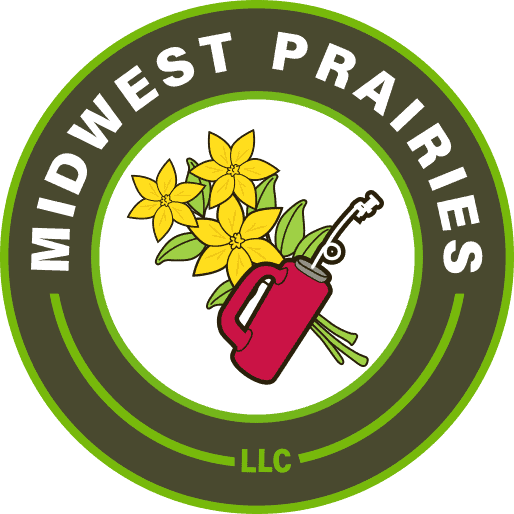Prairie Restoration
Prairie Restoration
Specializing in ecological restoration of prairies
Prairie restoration is the process by which we attempt to restore the native plant matrix in areas where prairie formerly existed. At the time of settlement (prior to 1840), prairies dominated areas of southern Wisconsin.
Today, there are several towns, such as Sun Prairie and Prairie du Sac named for the prairies that the settlers first encountered. These areas were extensive, rich, and diverse grasslands encompassing thousands of acres. The plant and animal diversity of the prairie was incredible. Often, remnant prairies are found to have upwards of 300 species in an acre. Thousands of species of birds, animals, and insects evolved to live and thrive in the prairie ecosystem. Subterranean life including fungi, bacteria, micro and macro invertebrates created a complex universe all its own under the surface.
The process of restoring a prairie can be complex depending on the condition of the site to be restored. The biggest hindrance to success is the presence of weeds. Weeds germinate and grow quickly and even if they are annual weeds, they can greatly hinder the growth of prairie seedlings. Proper soil preparation, therefore, is essential.
Burning every year for the first several years will help prairie plants compete against the weeds, but once well established, the site should be broken into 3-5 areas or units, one of which should be burned each year. This keeps the habitat in place for some birds and allows beneficial insects to complete their life cycles. By the time you hit year five, your prairie should be looking great!
Typically, the most expensive part of a prairie restoration is the cost of seed, so installing the seed in the right place under the right conditions is critical. Whenever possible, we use a mechanical seed drill that is specifically designed for prairie seeding. After seeding, mowing at a height of 8-12” during the first growing season will help reduce weed competition and allow sunlight to get to the small seedlings. Usually, prairies look pretty weedy in the first and second growing seasons. By the third season many of the flowers will bloom. However, some species are very conservative and may take up to a decade to make their presence known. Prairies are dynamic and respond to changing conditions and variations in weather. To properly appreciate and enjoy prairie take a walk every day. Listen, smell and see.


